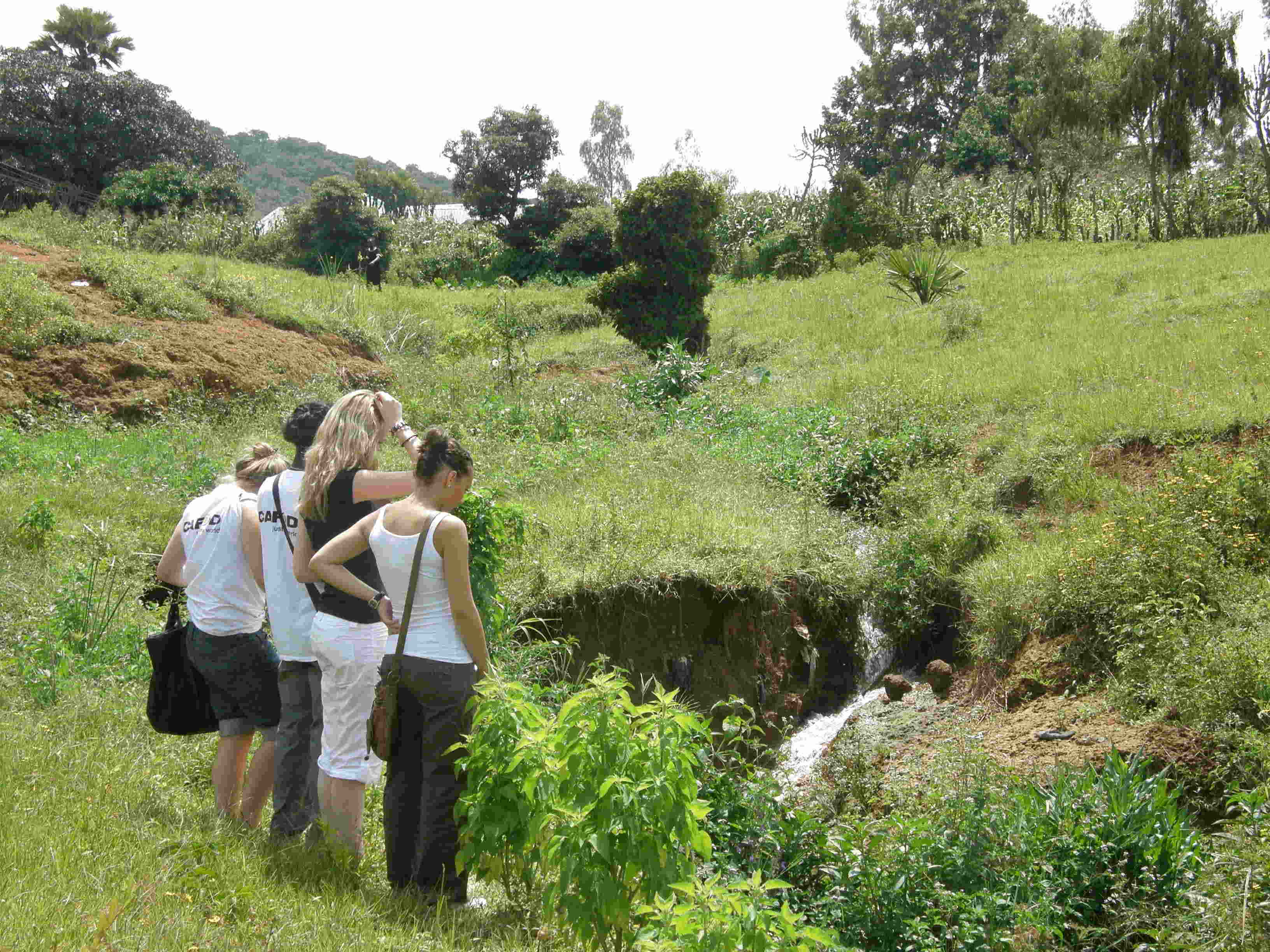
On the Thursday evening having met Alex Gray the head of CAFOD operations in Nigeria we checked into the Diocesan Centre. This was an impressive complex with a beautiful Church, 2 large accommodation blocks, a major conference centre, refectory and gardens. Our rooms were basic but very comfortable, the plumbing was a bit suspect but we were delighted with the standard and felt very spoiled. The Archbishop’s residence is also part of the Centre. We had to settle in quickly and be ready in about 30 minutes to go for our evening meal. It was a long time since breakfast so we didn’t need much encouragement to be ready quickly. Alex had planned a great treat for us a visit to a Chinese restaurant. A bit bizarre but our diet had been very limited so we were very grateful for the change. We had a wonderful evening, the food was very good and there was plenty of it. It was good to have time to reflect on our time in Kogi State and tell the tales of our experiences to Alex.
We had an early start the next day and a very full programme. Peter had not seen his wonderful family for 3 weeks, before meeting us in Abuja he had been at a Conference, so he and Amadu went home for the Thursday evening and we had two new drivers and 4 wheeled drive vehicles from the Kuru Water Project. Claitus from the project was our host for the morning. The journey was interesting and we were able to see that Jos is a large city that is growing significantly. There were far more big buildings and factories and a greater variety of housing. It was good to see some new housing estates with brick built houses that were small and basic but had water supply, sewage and drainage. They also had tiled roofs, windows and a small yard. It was noticeably more prosperous in Jos. One of the trucks had a flat tyre on the journey, we gathered a small audience at the roadside as the wheel was changed and several people offered to help, but it was fixed in less than 10 minutes.

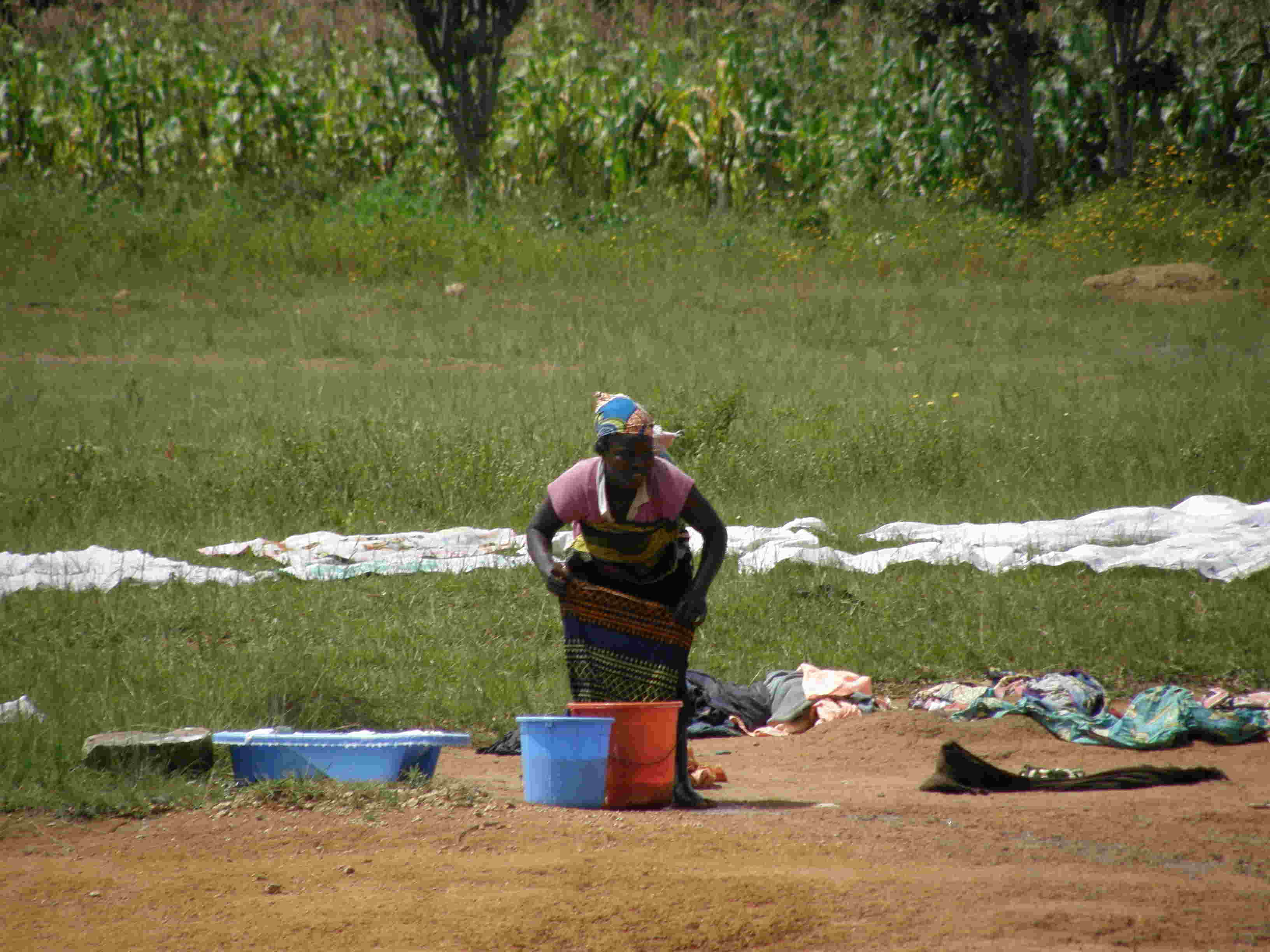 Wash Day at the stream
Wash Day at the stream
Our journey took us off of the main roads and we entered a rural area with dirt tracks, small farms and villages. It was a good thing that we were in the trucks; the going was a bit rough. We arrived at the Kuru Project and were surrounded by lush vegetation very much like a well watered Mediterranean region. Oleanders, bougainvilleas, masses of prickly pear cacti (used as washing lines) and neat houses. We were greeted by the staff and shown around. Access to clean water is the most fundamental necessity in the development process. At Kuru they design systems and test them for cost and efficiency. We saw water capture systems where water can be harvested in the wet season and used for drinking and irrigation in the dry season. Various types of storage and filtration systems were on view, all low tech and easily maintained, very good examples of intermediate technology.
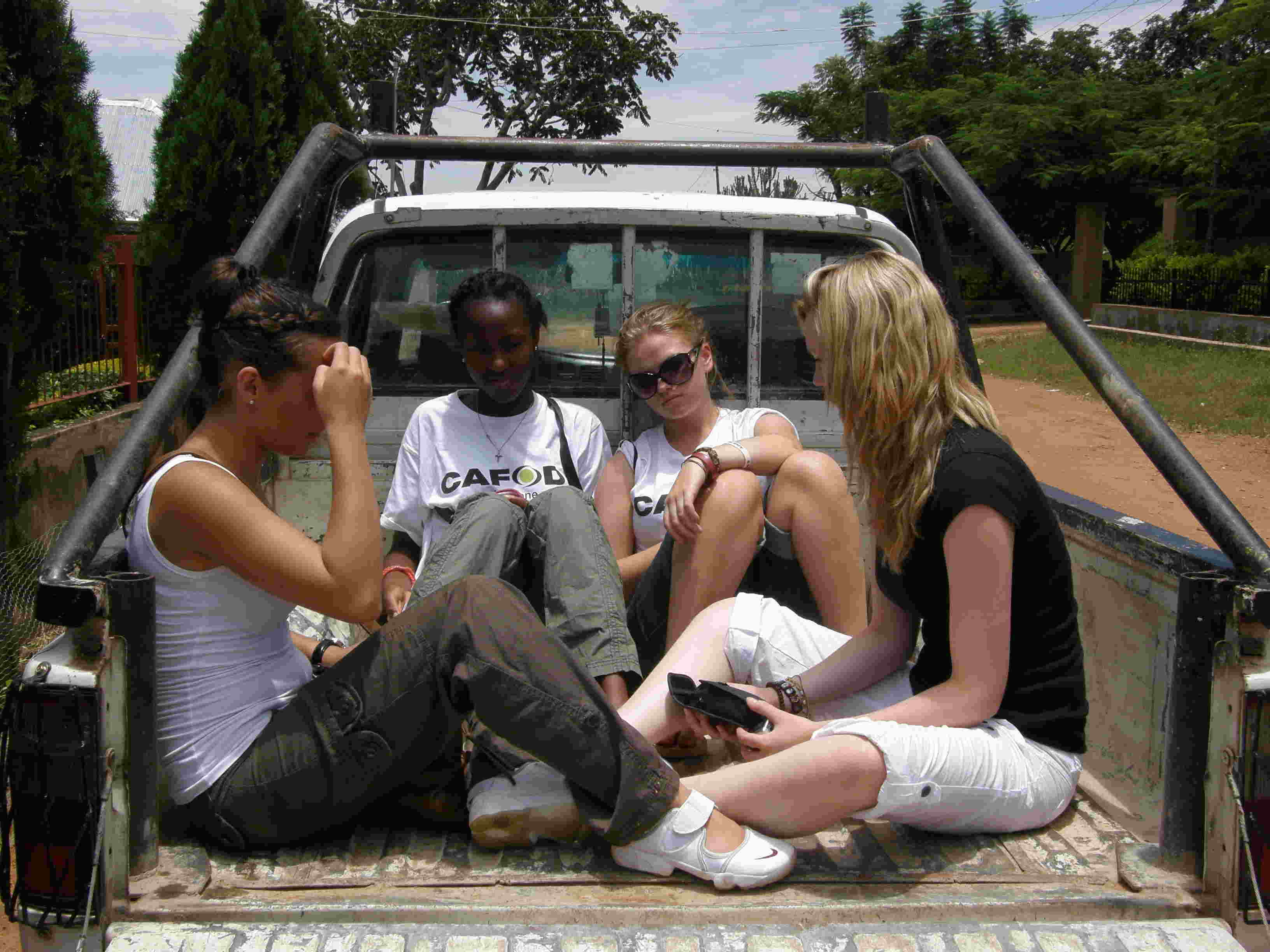
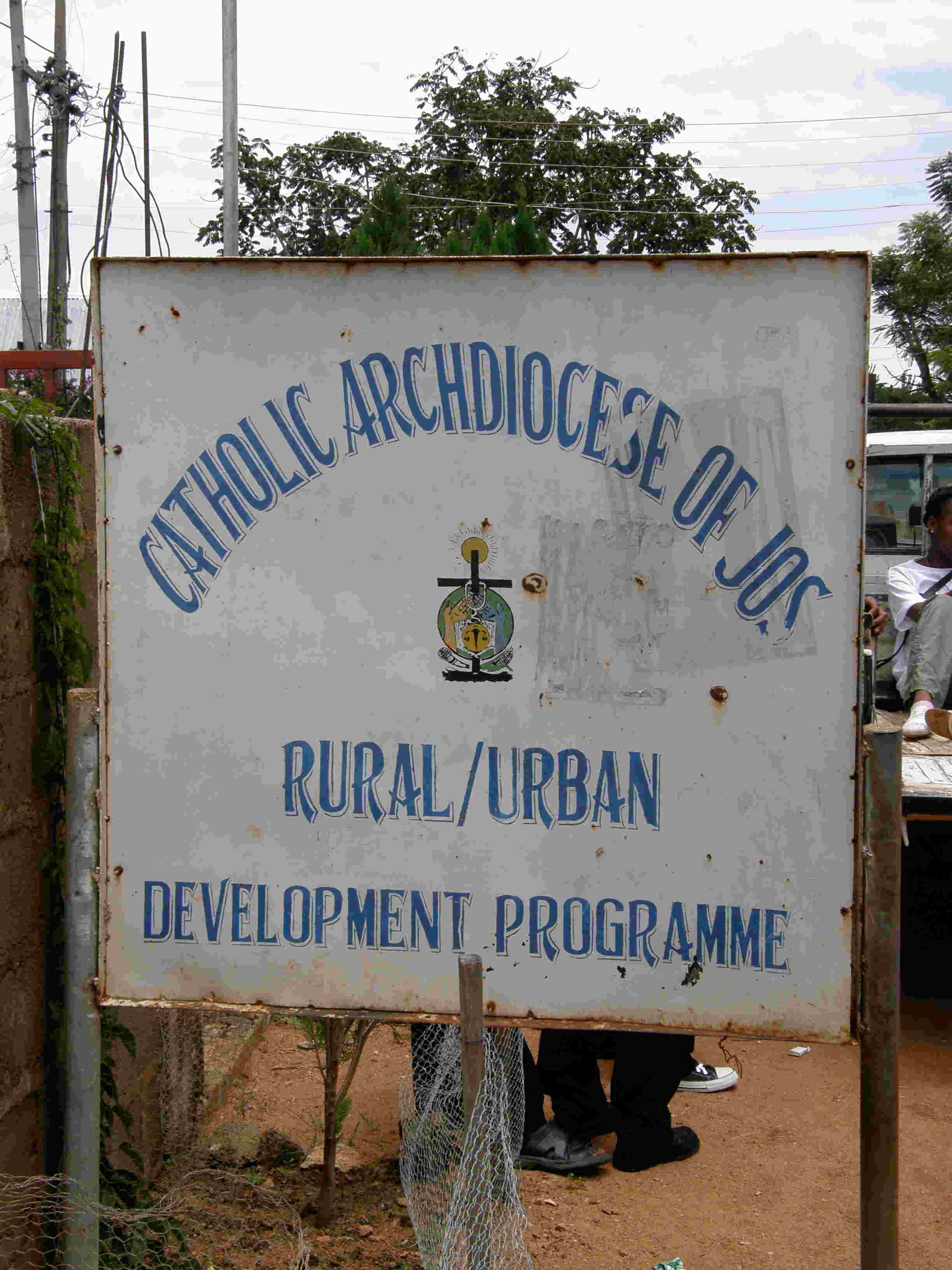
The large blue barrels that filter water, making it clean and safe to drink were used throughout the centre and we were able to sample the water, it was fine. We had seen these at Ankpa and we hope that CAFOD will install some at Ankpapa very soon. We met a young woman who was in charge of the agricultural programme; she travels through the area advising farmers on irrigation and farming techniques. New crops with high protein content and those which fix nitrogen in the soil are being introduced. There is a new model farm at Kuru, it is still being built and developed. They aim to demonstrate new cropping patterns, husbandry systems and water storage to farmers from all over Plateau State. The pig farm is up and running and I saw the cleanest pig pens of anywhere here, the pigs were very happy and friendly too. Bee keeping is practised at the farm and we took photos of the hives for the Bee Happy team (winners of Solutions for the Planet 2009) other experiments were being carried out with viticulture and a whole range of fruits and vegetables. It was a very impressive project.
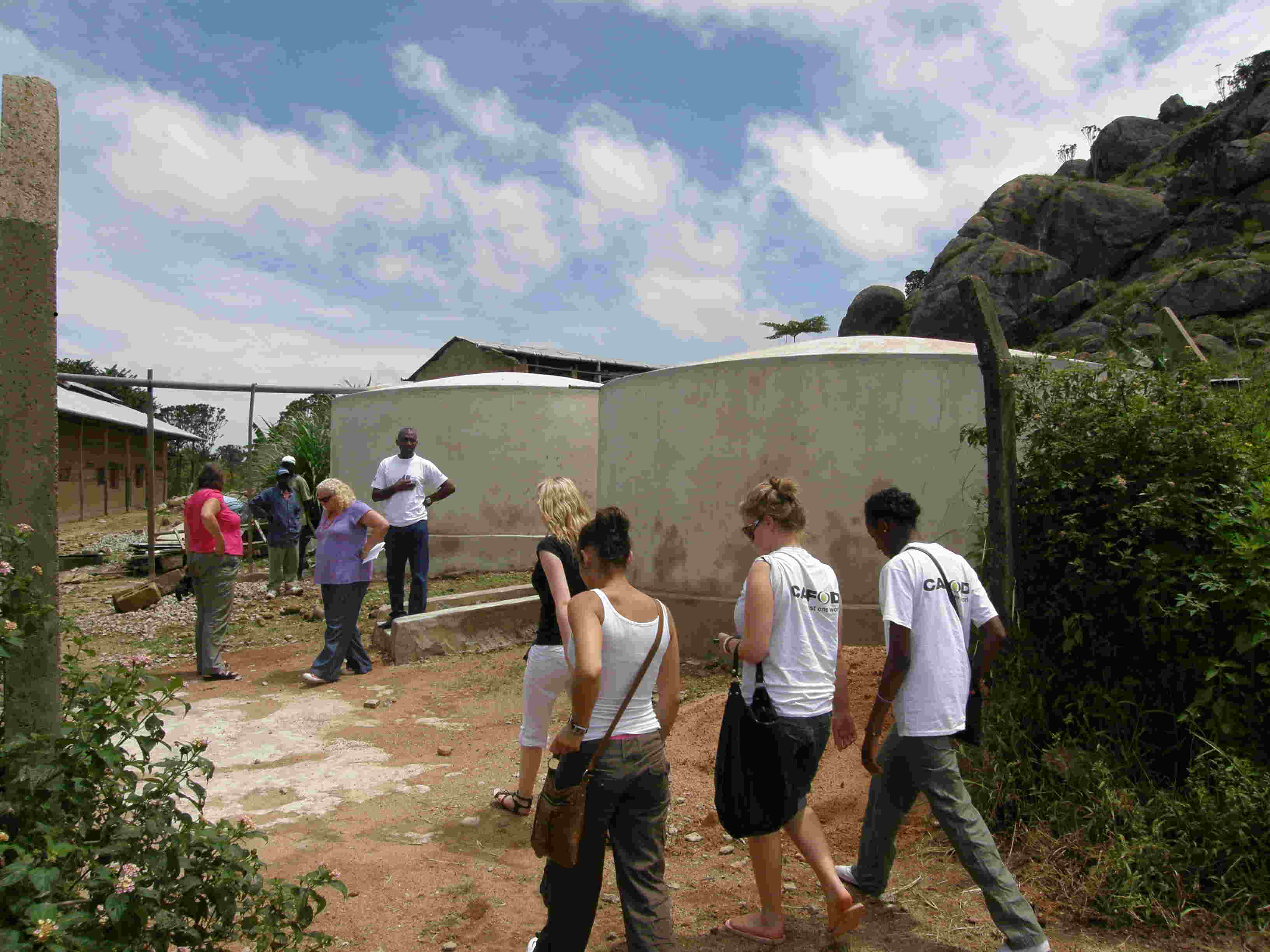 Water Storage at the experimental farm
Water Storage at the experimental farm
We were also able to see tube wells and realised how important they would be when the fast flowing streams dried up. It was hard to imagine this verdant landscape in the dry season but the staff told us that the dry season was getting longer and they believe this is a direct result of climate change.
We went to a small village and visited a family who had installed latrines in their compound. This extended family lived in a small collection of houses around a yard, they were all busy pounding cassava, preparing vegetables, washing clothes and chopping wood. They welcomed us into their home and proudly showed the latrines. The design was simple but effective and they had noticed a considerable improvement in their general health and their quality of life since the installation.
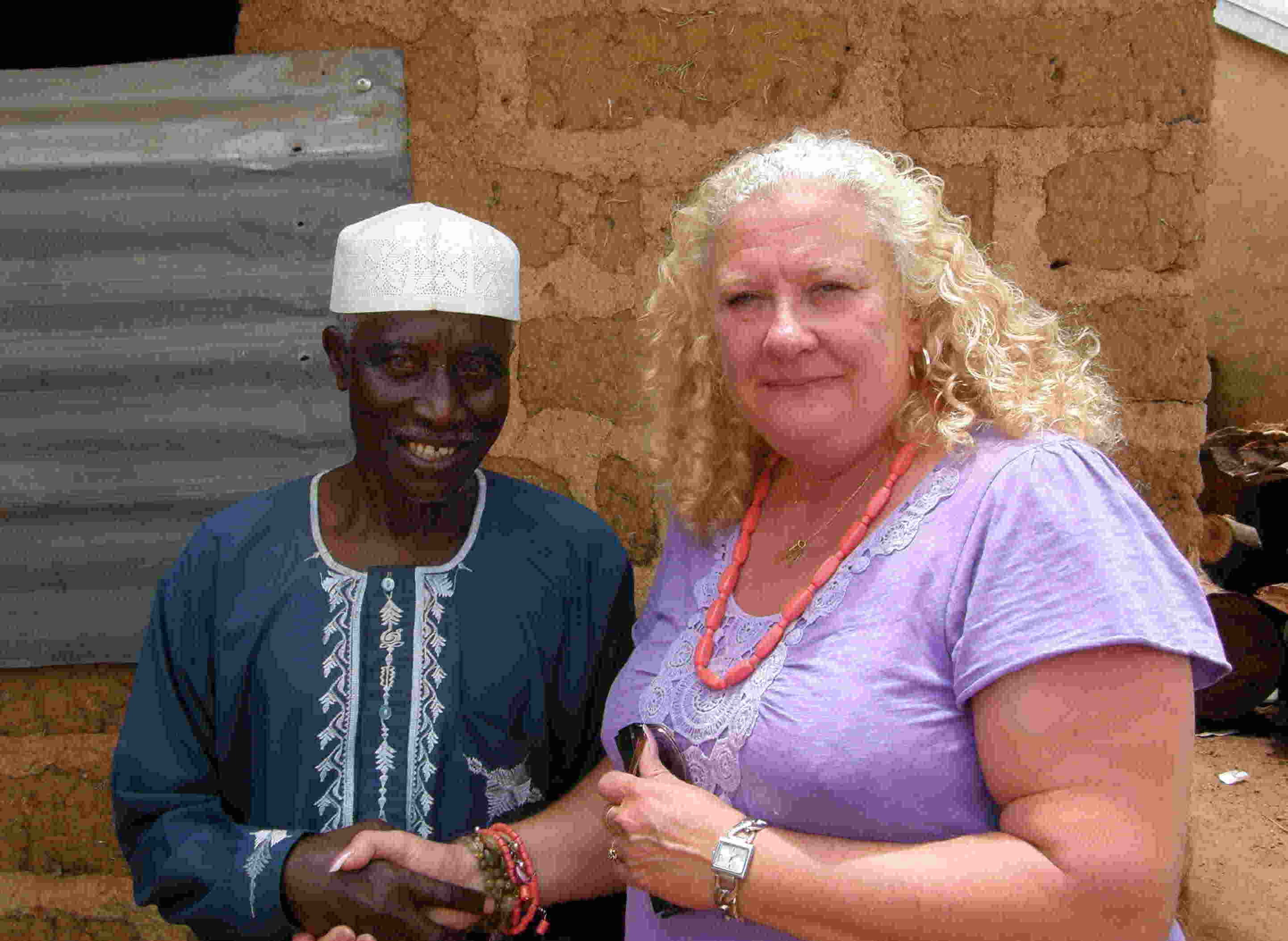
Grand Father and I outside the latrine
Grand father was leading the way showing other families the benefits. They had paid part of the cost and Kuru/CAFOD had funded the bulk of the work. Claitus wanted us to visit another village but unfortunately we had to turn down this opportunity as we were running out of time. It was now about 2.00pm and at 4.00pm we had to back in Jos, changed and ready to visit St. Louis’s College a large girls’ school. Prior to that we had to visit the CAFOD offices and make a few changes to our Presentation and test it out as there had been no electricity at the Retreat Centre. We were also scheduled to meet the Archbishop of Jos and a bit more than a quick wash and brush up was required.
On the way back we had to pick up the repaired tyre and a very hectic couple of hours followed. This involved cold showers, lots of howling came from those bathrooms; transfer of outfits required for the meeting with the Archbishop to the CAFOD office for ironing as there was no power at the Centre; changes to be made to the presentation and a very quick discussion of how we were going to approach the visit to St Louis’s. The CAFOD staff saw the Mums and Babies team in full flow. We wanted to change the original presentation to focus on Nigeria, so Peter was gathering statistics, Kimi was producing graphs, Katie and Megan were changing the script, Izzy was timing everything, Margaret was ironing and I made drinks for everyone and made the girls eat a breakfast bar as they had now been at full pace since breakfast at 7.30am.. Tim was trying to get a link on line to the CAFOD offices in London. With just 10 minutes to spare we set off for the girls school.
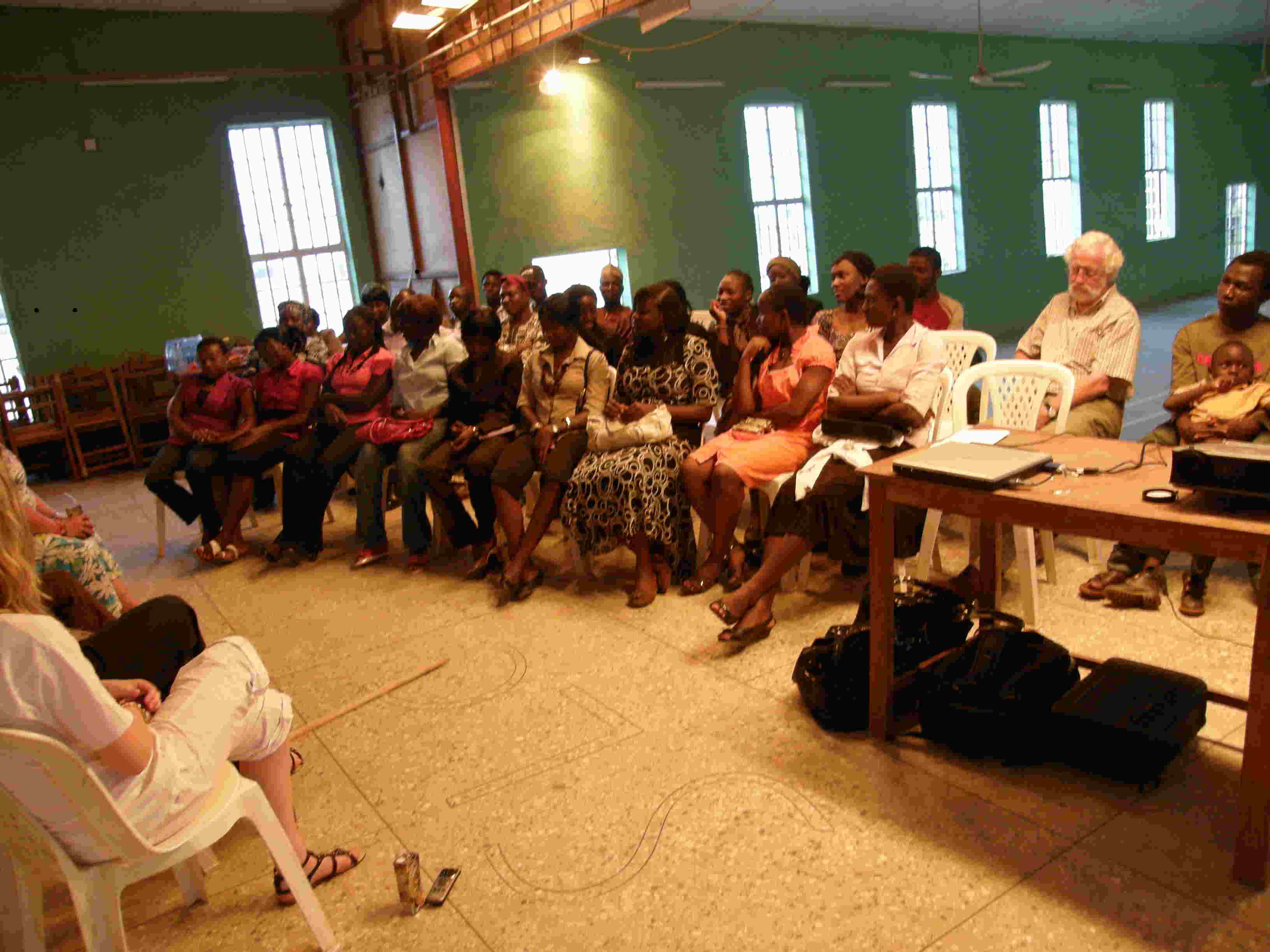
St. Louis’s College , JOS
Next week – the remainder of Friday
Elaine